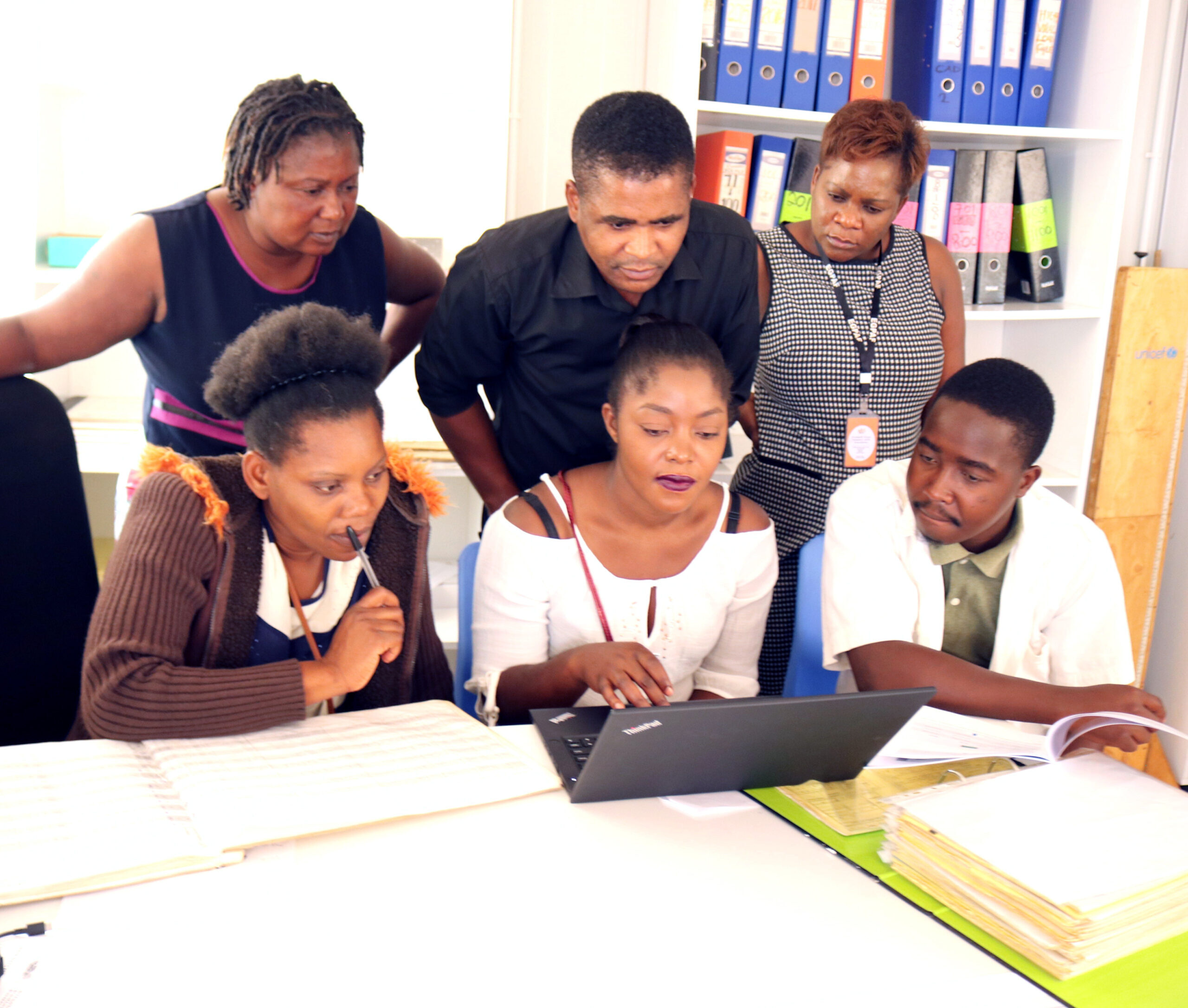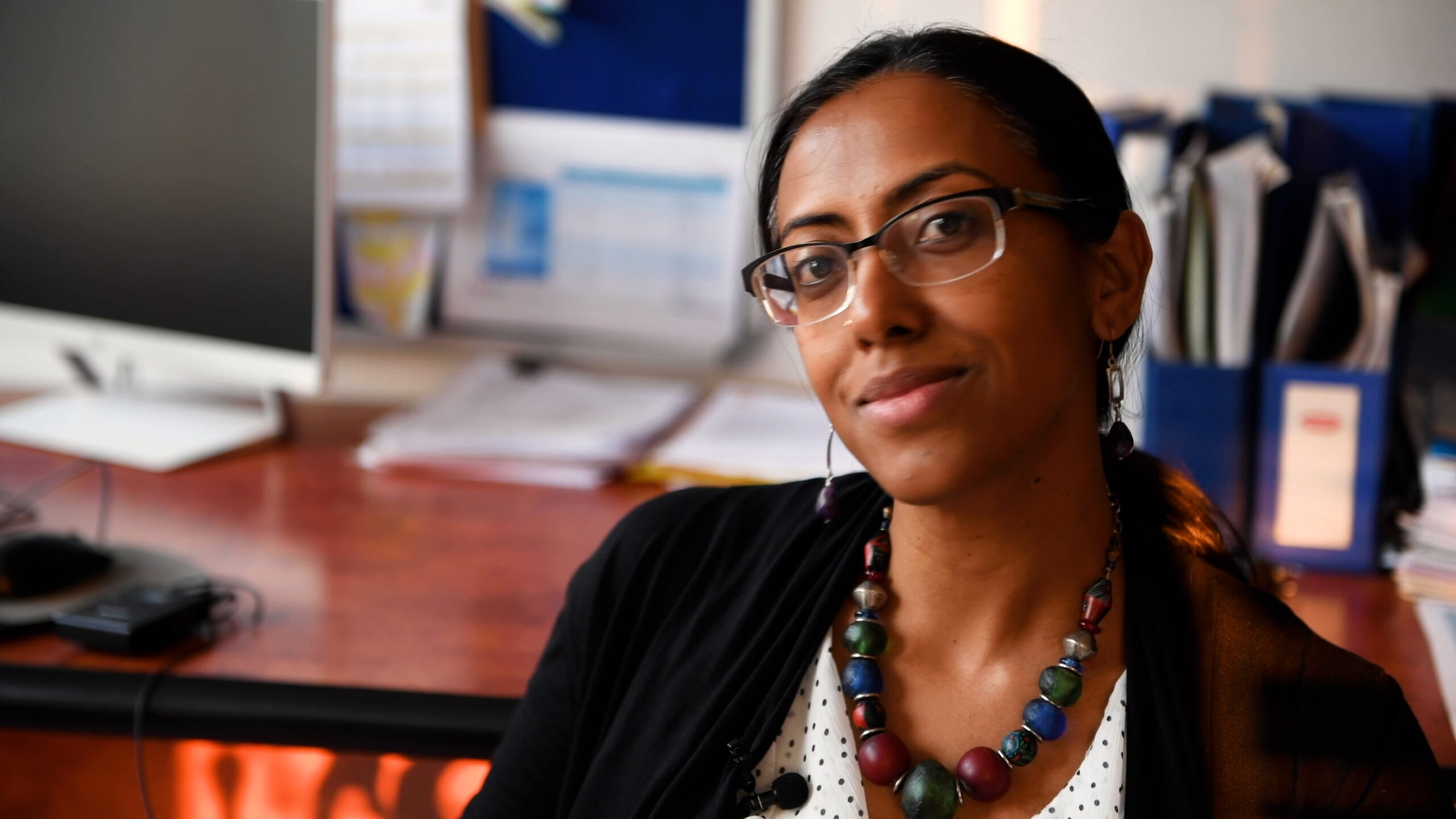Despite a slow introduction to the SARS-COV-2 (COVID-19) pandemic, Malawi has not escaped the trauma of this highly contagious virus. From June through August 2021, Malawi experienced its third major COVID-19 wave, propelled by the Delta variant. At its peak, close to 200 deaths per day were attributed to COVID-19 in this nation of 19 million.
Accurately determining the impact of COVID-19 is a challenge in this southern African country, where most of the population lives in rural villages. Conveying accurate information and ensuring that all people have access to health care has been difficult during this time. Fortunately, Malawi public health officials were not starting from scratch.
Decades of response to the ongoing HIV epidemic has resulted in public health tools and expertise to meet the challenge. The Elizabeth Glaser Pediatric AIDS Foundation (EGPAF) has been implementing HIV and family health programs in Malawi since 2003 and has tremendous credibility when it comes to managing a health crisis.

“EGPAF has a transferable set of skills as well as service platforms,” says Veena Sampathkumar, country director of EGPAF-Malawi. “We’re already delivering services related to one infectious disease, so we were able to quickly transfer and translate that support to COVID-19. One of the key focuses has been to continue to provide people living with HIV access to antiretroviral therapy while minimizing their risk of COVID-19.
“More importantly, we have a core capacity and expertise on how we use data broadly to support an epidemic response,” she says.
Phone-based Surveillance
Early in the COVID-19 pandemic, when Malawi had limited capacity and supplies for testing, EGPAF partnered with the Ministry of Health and the U.S. Centers for Disease Control and Prevention (CDC) to develop and implement a phone-based surveillance system to monitor trends of signs and symptoms for COVID-19 and its impact on healthcare access for people living with HIV as well as for the general population.
We’re already delivering services related to one infectious disease, so we were able to quickly translate that support to COVID-19. Veena Sampathkumar
“We have a team of 13 nurses who call randomly generated phone numbers across the country and screen eligible individuals for COVID-19 symptoms and provide awareness of COVID-19 symptoms and infection prevention over the phone,” says Sampathkumar. “Through the calls, we have been also able find out about any death in that family since the start of COVID-19.
“This has become a really important tool for the government’s response to triangulate and determine the spread of COVID-19 symptoms across the country,” she says.” And now it has evolved to include information about vaccinations.”
Digital Health and Informatics
But EGPAF’s impact extends beyond monitoring this particular pandemic.
“As much as the global focus has turned to this specific disease, we are looking at the situation as a means to strengthen primary healthcare access; to improve our existing disease surveillance; to improve our existing capacities and systems of dealing with diseases especially in countries that have heavy burden on HIV, on TB, on malaria,” says Sampathkumar.

“Our mortality rate for HIV is still much higher—with 12,000 AIDS-related deaths in 2020—than the mortality rate of COVID-19,” says Sampathkumar. “Deaths from malaria and tuberculosis rival the number of deaths from COVID-19. Moving forward, it’s not just COVID-19 that we need to monitor, but it’s any disease that the Public Health Institute of Malawi can have a better grasp on to monitor and respond.”
EGPAF’s Lab Information System Team, working with the CDC and the Department of Diagnostics, rapidly integrated diagnostics equipment to a national lab information system that allowed real time tracking of SARS-COV-2 testing across the country. In partnership with Luke International, an existing disease surveillance reporting tool is being upgraded for systematic monitoring of disease outbreaks.
Moving forward, it’s not just COVID-19 that we need to monitor, but any disease to have a better grasp on to monitor and respond. Veena Sampathkumar
This has made it faster to transmit data and access it across the length of the country—allowing data to be collected at the facility and in the community and analyzed nationally to improve patient care and support clinical decision making while also monitoring disease outbreaks. A series of intuitive and real time data dashboards have been enabled to inform lab technicians, health workers, and public health officials to respond to COVID-19 and other infectious diseases.
“I think we can all confirm that COVID-19 really put health informatics in the spotlight,” says Sampathkumar. “Everybody has wanted to see where the epidemic is globally in terms of cases and in terms of mortality—and now also in terms of vaccination data. This has really pushed all of us to think about the digital health investments, we’re making. We’re responding to COVID-19, but also thinking through what this means for an overall system strengthening approach.”
A Leap Forward in Care and Treatment
 “We want the patient to get the best care and treatment, and we want to enable them to have the best outcomes, making sure all the information that’s related to that patient over time is easily accessible. With electronic systems that’s much more possible,” says Sampathkumar. “And for the hardworking and often overwhelmed health care workers who manage the clinics, and provide patient care information is key to determining the most appropriate response.
“We want the patient to get the best care and treatment, and we want to enable them to have the best outcomes, making sure all the information that’s related to that patient over time is easily accessible. With electronic systems that’s much more possible,” says Sampathkumar. “And for the hardworking and often overwhelmed health care workers who manage the clinics, and provide patient care information is key to determining the most appropriate response.
“At a district, national, and global level, we want to bring all this data together for policymakers and researchers to ensure that surveillance systems support rapid and timely response and inform decision making on gaps and investments,” says Sampathkumar.
“This is where, I think, COVID-19 has had an unintended benefit,” concludes Sampathkumar. “It has fast-tracked the adoption of the digital health systems in a resource constrained environment, which will benefit the entire health system and every individual.”



